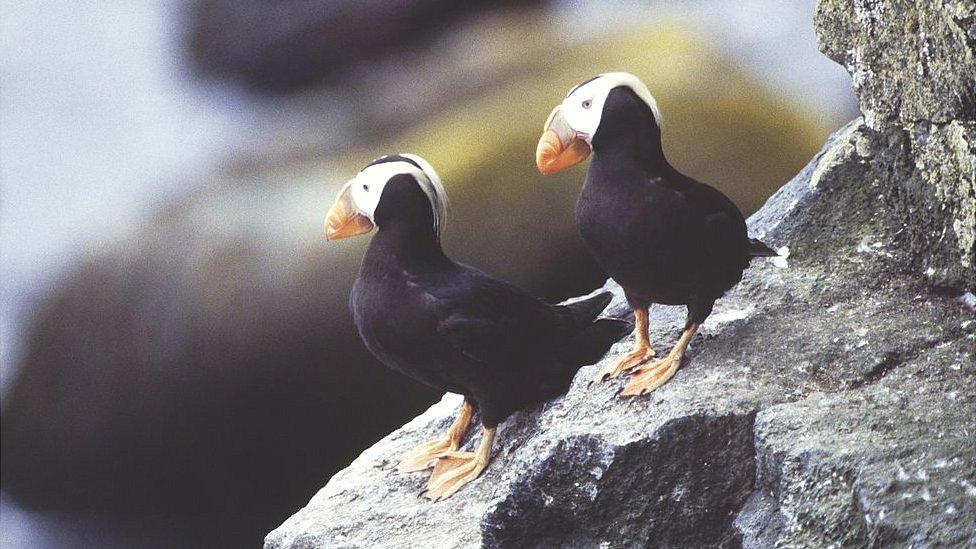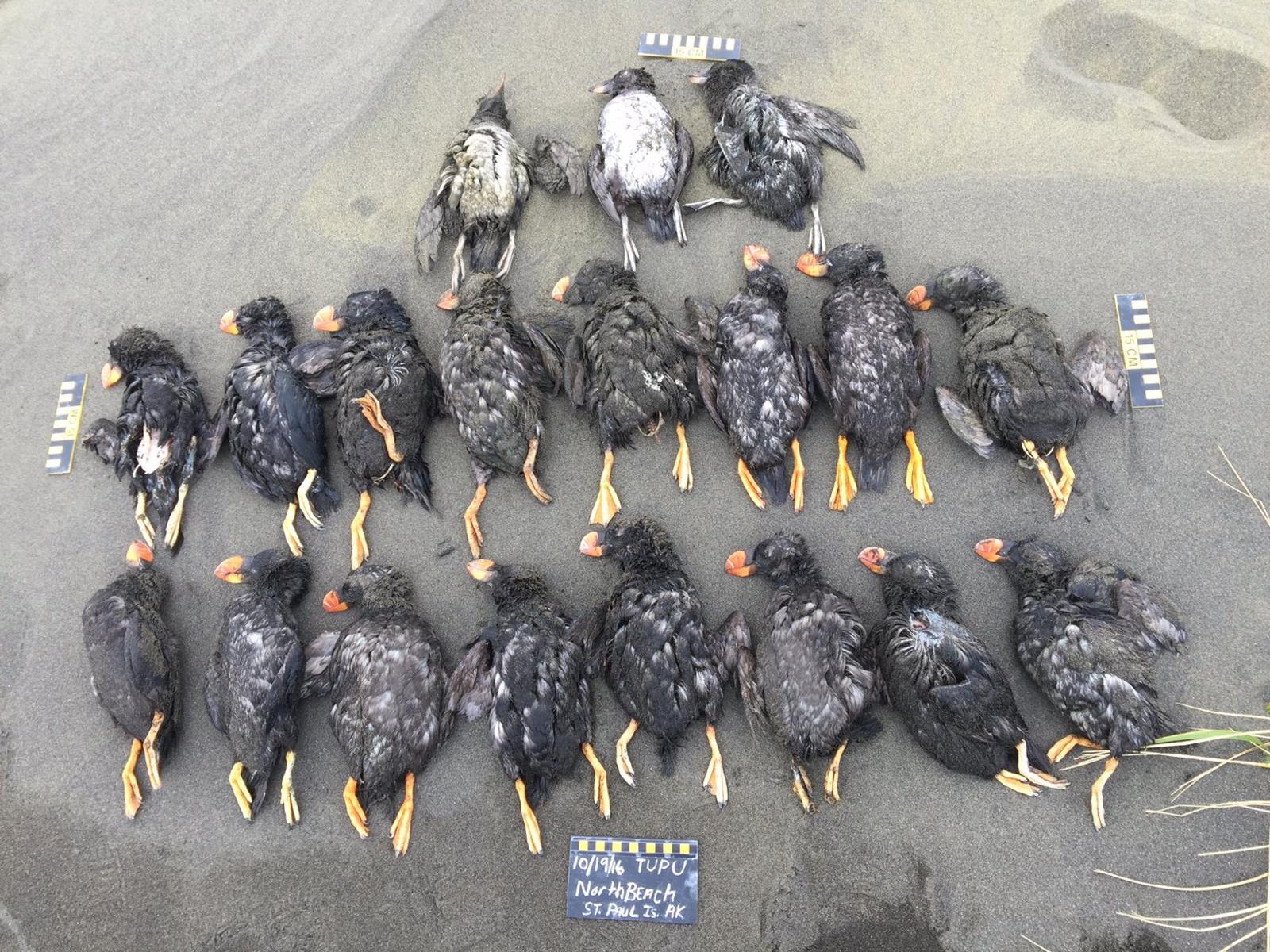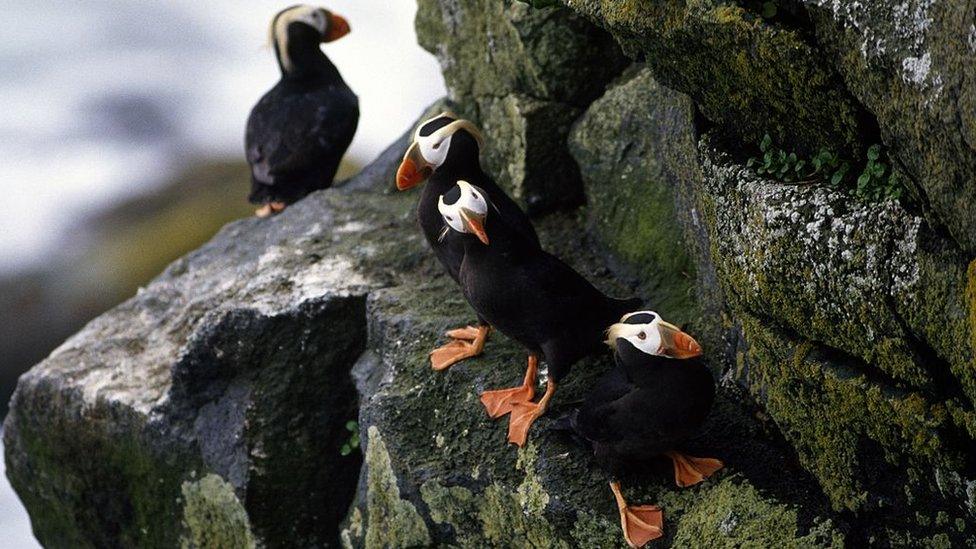Climate change link to puffin deaths
- Published

The tufted puffin is common along the northern Pacific coast
Climate change played a role in the deaths of thousands of puffins in Alaska, according to a study.
Scientists believe the birds starved to death when the fish they eat migrated north with rising sea temperatures.
The bodies of dead, emaciated puffins began washing up on beaches on Saint Paul Island in autumn 2016.
Up to 9,000 puffins and other seabirds died over the course of a few months, US scientists say.
And climate-driven shifts in fish populations, combined with the onset of moulting, may have caused this mass die-off.
"Mass mortality events are increasing in frequency and magnitude, potentially linked with ongoing climate change," researchers led by Timothy Jones of the University of Washington, Seattle, wrote in the journal Plos One, external.

Puffins found on North Beach, Saint Paul Island on 19 October 2016
The findings add to fears that rising temperatures are having unpredictable effects on birds, bats and other wildlife.
A recent study found birds nesting in the Arctic faced a bigger risk of having their nests raided by predators due to changes linked to climate change.
And over two days last November, record-breaking heat in Australia's north wiped out almost one-third of the nation's spectacled flying foxes, according to researchers.
More stories like this:
The latest study looked at tufted puffins breeding in the Bering Sea, off the coast of Alaska.
The birds feed on fish and marine invertebrates, which in turn feed on ocean plankton.
Scientists fear that unusually warm waters can shift the ocean food web, spelling trouble for marine life, including puffins.

The tufted puffin (Fratercular cirrhata)
More than 350 bodies of seabirds were found on beaches on Saint Paul Island between October 2016 to January 2017.
Most were tufted puffins but bodies of a second seabird, the Crested auklet, were also found.

Puffins
There are several species of puffin
Two species, the tufted puffin and horned puffin, are found in the North Pacific Ocean, while the Atlantic puffin is found in the North Atlantic Ocean
The Atlantic puffin is classed as vulnerable to extinction, due to a number of threats, including hunting, pollution and climate change
The tufted puffin, with its distinctive red bill and whitish tufts, spends the winter at sea, and nests during spring and summer in coastal colonies from California north to Alaska.

Modelling work suggests that between 3,150 and 8,500 birds died.
Most were adults in the process of losing their feathers, which is a known source of stress.
And a reduction in food before the moult may have prevented many birds from surviving, the researchers suggest.
Follow Helen on Twitter, external.